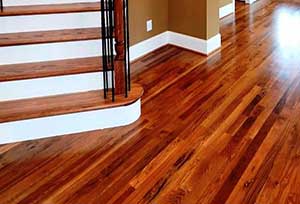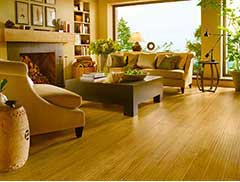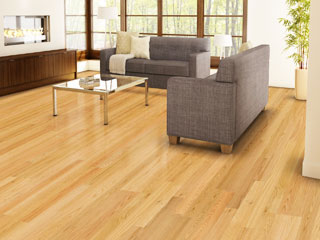 Many homeowners and interior designers choose hardwood flooring because of it’s universal appeal. Its enduring quality and inherent beauty have made it a mainstay in homes for ages. But as sustainability and environmental issues gain prominence, it’s critical to assess the environmental impact of hardwood flooring and look into eco-friendly alternatives. Let’s examine the life cycle of hardwood flooring, the environmental issues it raises, and eco-friendly substitutes for individuals who want to make more sustainable decisions.
Many homeowners and interior designers choose hardwood flooring because of it’s universal appeal. Its enduring quality and inherent beauty have made it a mainstay in homes for ages. But as sustainability and environmental issues gain prominence, it’s critical to assess the environmental impact of hardwood flooring and look into eco-friendly alternatives. Let’s examine the life cycle of hardwood flooring, the environmental issues it raises, and eco-friendly substitutes for individuals who want to make more sustainable decisions.
The Life Cycle of Hardwood Flooring
Examining hardwood flooring’s complete life cycle—from the initial harvesting of trees to the final disposal or recycling of the flooring is essential to comprehending its environmental impact.
Harvesting Trees
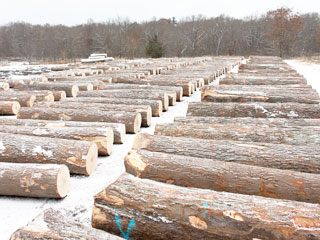 The process of making hardwood flooring starts with the felling of trees, usually from plantations or forests. Numerous kinds of hardwood, such as oak, cherry, and maple, are prized for both their practical and decorative attributes. But the ways in which trees are harvested can have a big effect on the ecosystem.
The process of making hardwood flooring starts with the felling of trees, usually from plantations or forests. Numerous kinds of hardwood, such as oak, cherry, and maple, are prized for both their practical and decorative attributes. But the ways in which trees are harvested can have a big effect on the ecosystem.
Sustainable practices harvest trees carefully, taking care to maintain the ecosystem’s health in the forest. On the other hand, in less ethical situations, clear-cutting—the removal of whole forest sections—can result in habitat damage and deforestation. Clear-cutting may have detrimental effects on the local wildlife, water quality, and soil stability.
Transportation and Manufacturing
The trees must be transported to sawmills and processing facilities after they are harvested. The process of moving the trees may increase greenhouse gas emissions, particularly if they are moved a great distance. Additionally, the manufacturing of hardwood flooring involves energy-intensive processes, such as sawing, drying, and finishing, which further contribute to environmental impacts.
Installation and Maintenance
Another stage that may have both beneficial and detrimental effects on the environment is the installation of hardwood flooring. On the one hand, volatile organic compounds (VOCs) are frequently used in adhesives and finishes for hardwood flooring installation, which can worsen indoor air pollution. However, properly installed hardwood flooring can last longer than other materials, thus reducing waste. And using water based urethane rather than oil based urethane reduces VOC’s.
End of Life and Disposal
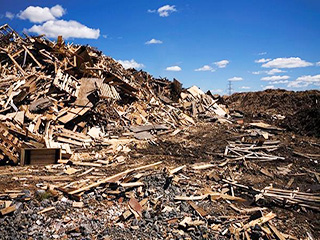 Hardwood flooring needs to be replaced or disposed of once is beyond repair and no longer refinishable. Hardwood flooring can occasionally be recycled or used for other purposes, although this is not always an easy task. Hardwood flooring that is thrown away improperly could wind up in landfills and exacerbate waste management problems.
Hardwood flooring needs to be replaced or disposed of once is beyond repair and no longer refinishable. Hardwood flooring can occasionally be recycled or used for other purposes, although this is not always an easy task. Hardwood flooring that is thrown away improperly could wind up in landfills and exacerbate waste management problems.
Although hardwood is a naturally occurring and biodegradable material, unlike plastic or certain synthetic materials, disposal procedures raise more environmental issues than the intrinsic qualities of hardwood. Eco-friendly methods of using and repurposing hardwood can be supported by appropriate recycling and disposal procedures, which can also assist in reducing waste-related issues.
Landfill Space: One problem with hardwood flooring disposal in landfills is that it takes up space on that could be utilized for other waste products or left undeveloped. Because landfills are limited resources, sustainable waste management depends on making the best use of these areas.
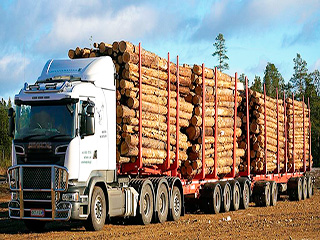 Transportation and Energy Costs: There may be related energy and transportation expenses involved in moving used hardwood flooring to landfills. Even though hardwood decomposes naturally, there are environmental concerns associated with the transportation of materials to landfills, including fuel usage and emissions.
Transportation and Energy Costs: There may be related energy and transportation expenses involved in moving used hardwood flooring to landfills. Even though hardwood decomposes naturally, there are environmental concerns associated with the transportation of materials to landfills, including fuel usage and emissions.
Alternative Uses: It is frequently more environmentally responsible to look for alternate uses for hardwood rather than disposing of it in landfills. This can involve prolonging the wood’s life cycle, recycling it or using it for other purposes, and lowering the demand for new hardwood resources.
Forest Preservation: Sustainable forestry methods and the ethical handling and recycling of hardwood flooring can ease the burden on forests and support larger environmental conservation initiatives.
Eco-Friendly Alternatives to Hardwood Flooring
Fortunately, consumers have more eco-friendly options to choose from when it comes to classic hardwood flooring as environmental consciousness increases. These substitutes aim to alleviate a few of the environmental issues related to hardwood floors. Here are a few well-liked choices:
Bamboo Flooring
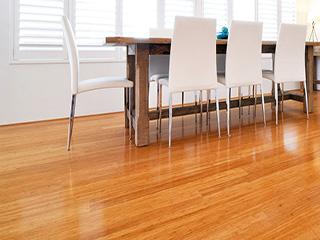 Compared to conventional hardwoods, bamboo is frequently thought to be a more sustainable option. Bamboo may be turned into flooring that nearly mimics hardwood, despite the fact that it is officially a grass rather than a wood. Bamboo is renowned for growing quickly; certain species can reach maturity in as little as three to five years. Its brief growth cycle renders it a resource that is replenishable.
Compared to conventional hardwoods, bamboo is frequently thought to be a more sustainable option. Bamboo may be turned into flooring that nearly mimics hardwood, despite the fact that it is officially a grass rather than a wood. Bamboo is renowned for growing quickly; certain species can reach maturity in as little as three to five years. Its brief growth cycle renders it a resource that is replenishable.
Additionally, non-toxic adhesives and finishes can be used to make bamboo flooring, which can help lower the amount of volatile organic compounds (VOCs) in your house. But it’s crucial to make sure the bamboo flooring you select is approved by a reputable sustainability organization, such the Forest Stewardship Council (FSC).
Cork Flooring
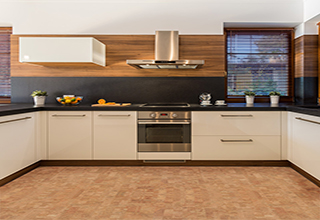 Another sustainable flooring choice is cork. The bark of cork oak trees, which naturally regenerates after harvesting, is used to make it. Cork flooring is therefore a sustainable and renewable material. Additionally, cork has superior insulating qualities that offer acoustic and thermal benefits.
Another sustainable flooring choice is cork. The bark of cork oak trees, which naturally regenerates after harvesting, is used to make it. Cork flooring is therefore a sustainable and renewable material. Additionally, cork has superior insulating qualities that offer acoustic and thermal benefits.
There are many different designs of cork flooring, and it can be treated with non-toxic coatings. Similar to bamboo, cork flooring must be certified by a credible body in order to guarantee its sustainability.
Reclaimed and Recycled wood
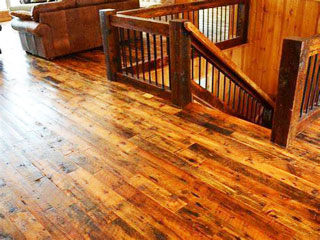 Reclaimed or salvaged wood is among the most environmentally friendly options available for hardwood floors. This is reusing wood for flooring from buildings, such as factories, barns, or other buildings that have been demolished. You’re prolonging the life of the current wood and avoiding the need to harvest new trees by doing this.
Reclaimed or salvaged wood is among the most environmentally friendly options available for hardwood floors. This is reusing wood for flooring from buildings, such as factories, barns, or other buildings that have been demolished. You’re prolonging the life of the current wood and avoiding the need to harvest new trees by doing this.
Reclaimed wood can give your flooring personality and a distinctive, worn look. Reclaimed wood can also minimize waste and the environmental damage that comes with producing new hardwood floors.
Engineered Wood Flooring
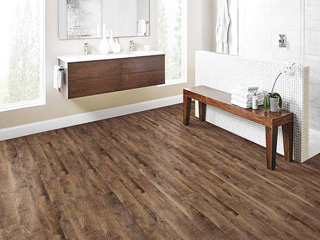 Solid hardwood veneer is placed on top of layers of wood that have been bonded together to create engineered wood flooring. Because less solid wood is required for each plank in this design, it is a more resource-efficient option. Because engineered wood flooring is frequently more stable than solid wood, it is less vulnerable to variations in temperature and humidity.
Solid hardwood veneer is placed on top of layers of wood that have been bonded together to create engineered wood flooring. Because less solid wood is required for each plank in this design, it is a more resource-efficient option. Because engineered wood flooring is frequently more stable than solid wood, it is less vulnerable to variations in temperature and humidity.
Furthermore, it is possible to make engineered wood with fewer faults, which reduces waste during the manufacturing process. To reduce indoor air pollution, however, formaldehyde-free adhesives and coatings must be used in product selection.
Sustainable Practices in Hardwood Flooring
Even though hardwood flooring can have negative environmental effects, there are ways to lessen those effects and choose hardwood that is more environmentally friendly:
Certified Sustainable Hardwood
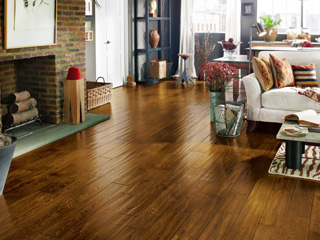 There are possibilities to select certified sustainable hardwood for individuals who are devoted to the conventional hardwood’s appearance and texture. Hardwood goods that adhere to stringent sustainability standards can obtain certification from organizations such as the Forest Stewardship Council (FSC). This guarantees that the wood is obtained ethically from forests that are maintained with consideration for the environment.
There are possibilities to select certified sustainable hardwood for individuals who are devoted to the conventional hardwood’s appearance and texture. Hardwood goods that adhere to stringent sustainability standards can obtain certification from organizations such as the Forest Stewardship Council (FSC). This guarantees that the wood is obtained ethically from forests that are maintained with consideration for the environment.
You may lessen the environmental effect of traditional hardwood flooring and promote sustainable forestry practices by choosing FSC-certified hardwood flooring.
Choose Local Hardwood
Selecting hardwood that is locally sourced helps lessen the transportation sector’s carbon footprint. Given that local hardwood frequently has shorter supply chains and a tighter relationship to ethical forestry methods, it may also originate from forests that are sustainably managed.
You may help local businesses and lessen your influence on the environment overall by selecting hardwood that is grown and processed locally.
Low-VOC Finishes and Adhesives
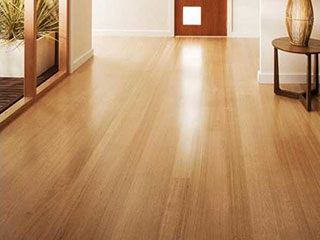 If you choose to lay down traditional hardwood flooring, you might want to choose adhesives and finishes with low volatile organic compounds (VOCs). Poor air quality can result from VOCs releasing dangerous substances into your home’s air. Low-VOC or water-based adhesives and coatings can reduce these emissions and make indoor air quality better.
If you choose to lay down traditional hardwood flooring, you might want to choose adhesives and finishes with low volatile organic compounds (VOCs). Poor air quality can result from VOCs releasing dangerous substances into your home’s air. Low-VOC or water-based adhesives and coatings can reduce these emissions and make indoor air quality better.
Making Informed Choices
It is important to be aware when thinking about your flooring selections and to take the environment’s influence as well as your own tastes into account. While making your choice, have the following important considerations in mind:
Lifestyle and Maintenance
Think about the way you want to use the area and your lifestyle. Because hardwood is durable, it might be a great option for places that see a lot of wear and tear. On the other hand, you might be more receptive to using different materials in spaces with less traffic.
Aesthetic Preferences
Your choice is heavily influenced by your own sense of style and preferences for design. While environmentally friendly substitutes can also have pleasing appearance, some people are drawn to the warmth and inherent beauty of conventional oak or other hardwoods.
Budget and Availability
The cost of various flooring options varies, and some environmentally friendly options could cost more than typical hardwood. Furthermore, availability may vary based on where you are. Think about your resources, including your budget and available supplies.
Environmental Impact
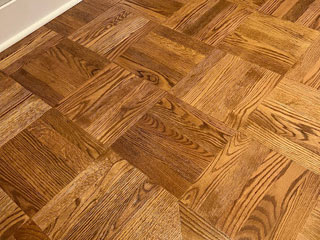 Our homes’ flooring decisions, among other decisions, can have a big influence on our efforts to live a more ecologically conscious and sustainable lifestyle. Although hardwood flooring has certain environmental issues, there exist the above sustainable methods and eco-friendly alternatives that can mitigate its adverse consequences.
Our homes’ flooring decisions, among other decisions, can have a big influence on our efforts to live a more ecologically conscious and sustainable lifestyle. Although hardwood flooring has certain environmental issues, there exist the above sustainable methods and eco-friendly alternatives that can mitigate its adverse consequences.
You can make decisions that are in line with your beliefs and design a more aesthetically pleasing and ecologically responsible living area by taking into account the full life cycle of your flooring, from the point of origin of the materials to the end of its usable life.
Ultimately, a number of considerations, such as your budget, level of commitment to sustainability, and personal tastes, will determine which option is best for you. In the future, the industry will probably provide even more cutting-edge and ecologically friendly solutions as the demand for eco-friendly flooring options grows.
In the end, it’s critical to evaluate how your decisions will affect the environment and decide which type of flooring best fits your dedication to sustainability. Choosing bamboo, cork, salvaged wood, local or certified sustainable hardwood can all help create a more environmentally conscious and conscientious home atmosphere.
